|
Impressionist Paintings
When I take off my glasses the world becomes an impressionist painting. Infused with light the purple flowers shimmer and vibrate. Impressionist brush strokes visible with juxtaposed colors record the passage of time give birth to fauve and cubist. Real or unreal Dali’s clock melts, the canvas yields a completed painting as Gauguin sets sail for Tahiti. Reel-to-reel tape yields the best sound. Dance the Virginia Reel as Picasso fractures physical planes. Reel in a struggling fish in a struggle for wholeness. Appeared in the October 2020 issue of Quill and Parchment Republished in the Weekly Avocet The Songs of Rivers They are stilled by dams though bass notes still resound in depths, lull catfish to sleep. The tremolo of rapids is lost to navigational safety. Lament the silenced symphony. The river waves to fishermen on shore. “Heed the sign, keep away from the outflow, unless you wish to kiss the muddy depths.” Below the dam, the river accelerates, sings of crickets and raindrops from its youth, up there, at its mountain birthplace. Published in The Weekly Avocet 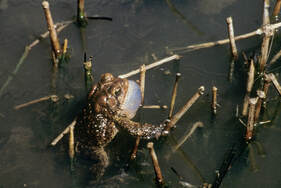 First, please let me offer an apology. The link to boaters at Nickajack Cave did not appear in the previous issue. Instead, I included this link which takes you to a fact sheet. Nickajack Cave Wildlife Refuge | Tennessee River Valley (tennesseerivervalleygeotourism.org) Here is a link to the video of boating at Nickajack Cave. Outdoor Chattanooga | Nickajack Cave Wildlife Refuge - YouTube Animals that Glow You are probably familiar with our local Lampyrid beetles that flash their lights on summer nights. They are commonly known as lightning bugs or fireflies, but they are neither bugs nor flies. They are beetles, scientifically Coleoptera, and, more specifically, the family Lampyridae. The Encyclopedia Britannica has an extensive article about organisms that glow. Scientists call this phenomenon Bioluminescence: bioluminescence | Causes, Examples, & Facts | Britannica The National Science Foundation has an article about fungi that glow A Thousand Points of Light: Bioluminescent Fungi | NSF - National Science Foundation If you have never seen a bioluminescent tide, please visit an ocean. The tiny Dinoflagellates put on quite a show. Bioluminescent Tide: What makes the ocean glow • Earth.com Some jellyfish and many of the stingless comb jellies glow as well. The Tennessee Aquarium once had a small display of comb jellies, which may still be there. This link will take you to a fairly technical article about comb jellies. Ctenophores - some notes from an expert (washington.edu) Nighttime Insects As spring approaches, you may want to try learning more about moths. Here is a video on attracting moths Black lighting for Moths Day 1 [ National Moth Week ] – YouTube Katydids sing late into fall evenings, and I have always enjoyed their chorus. Here is a seasonal article. Katydids - The Daily Garden Count the number of chirps in 15 seconds and add 40 for a rough estimate of the temperature. Amphibian Voices The Tennessee Wildlife Resource Agency has an excellent web page with photos of the many species of Tennessee frogs. You will see a species account if you click on an individual image. Frogs and Toads in Tennessee | State of Tennessee, Wildlife Resources Agency (tn.gov) You can also identify frogs by their calls. Go to the LEAPS website and click on the word “call” for a recording. Identify by Sound (leaps.ms) Active at Dusk and Dawn Crepuscular animals are active during the twilight hours of dusk and dawn. This website has an illustrated list of some of them. Crepuscular animals (animalia.bio) Night Sky Resources The StarDate Podcast and web page is a friendly resource even for beginners. StarDate Online | Your guide to the universe For more resources, check out the Earth and Sky podcast and web page Tonight | EarthSky Pictures within pictures. Asterism (astronomy) - Wikipedia
Rayz Reviewz Volume 2, Numbe 29 Revised
I was not happy with the previous blog post and revised it substantially before sending it out in mt newsletter. Here is the revised version. So, who am I to tell you about nature at night? I am someone who has read a lot, made some observations, written a lot, and published a little. My web page with links to published articles. Https://rayzimmermanauthor.com This issue of RayzReviewz is a gateway to knowledge about the nighttime world. Follow the links for an introduction to each of the topics. A Literary Approach Poems and stories of the world at night are abundant, and some people like to focus on the terrifying ones, but I take a gentler approach. The poem "To Know the Dark" by Wendell Berry offers the insight that "the dark blooms and sings." You can read the short text here: Poetry Chaikhana | Wendell Berry - To Know the Dark (poetry-chaikhana.com) The British writer Chris Yates, who spends a lot of time writing about fishing, also spends the shortest night of the year, the Summer Solstice, walking. His book, Nightwalk: A Journey into the Heart of Nature, relates his experience on one extended walk. Nightwalk: A Journey to the Heart of Nature by Chris Yates | Goodreads An Educational Approach Brad Daniel and Clifford Knapp prepared an article on leading a night walk, primarily with students in mind. Knapp, now deceased, was one of my mentors at Northern Illinois University. Read their safety tips, whether exploring the nighttime world on your own or as a leader or participant in outdoor activities. Explore an area in the daytime first, and make sure you know it well before going at night. Nighttime Adventures - Green Schools National Network Nighttime Animals The Barred Owl is the owl most commonly encountered because they sometimes hunt in the daytime and are not shy. The naturalist in this short film gives a great introduction to barred owls, talking about the eyes, ears, unique feathers, and habits of these birds. The Barred Owl - YouTube The Barred Owl Fact Sheet from the National Audubon Society has another excellent introduction. 10 Fun Facts About the Barred Owl | Audubon All about birds from the Cornell Laboratory of Ornithology is a good starting place to find information about any bird found in the United States. This is their page about screech owls, the smallest of our common owls. Eastern Screech-Owl Identification, All About Birds, Cornell Lab of Ornithology The Great Horned Owl entry in the Audubon Field Guide is a great place to learn about our largest owl here in Tennessee. Great Horned Owl | Audubon Field Guide The Barn Owl is also found in Tennessee and is very different from other owls. It has its own family, Tytonidae, and has nearly worldwide distribution. Barn Owl Overview, All About Birds, Cornell Lab of Ornithology Less common owls in Tennessee include the Short Eared Owl, the Snowy Owl, the Long-Eared Owl, and the diminutive Northern Saw-Whet Owl. The saw-whet is only found at high altitudes in Great Smoky Mountains National Park. Dr. Fred Alsop found a nesting pair of Northern Saw-Whet Owls in the Smokies. Owls remain mysterious, alluring (smokymountainnews.com) The Bats of Tennessee website for the Tennessee Wildlife Resource Agency has a photo of each of our many species of bats. Click on an image to see a life history of the species. Mammals Bats | State of Tennessee, Wildlife Resources Agency (tn.gov) Gray Bats are endangered and appear in Tennessee. This video from a neighboring state tells their story. Gray Bats | This American Land - YouTube Bat watching at Nickajack Cave in Marion County is a popular summer activity. This video shows people boating to the cave entrance. Nickajack Cave Wildlife Refuge | Tennessee River Valley (tennesseerivervalleygeotourism.org) The above link actually takes you to a fact sheet about Nickajack Cave. It is interesting in itself, but I will include the link about boating at Nickajack Cave in the next installment. This fact sheet on white-nose syndrome explains why bats are becoming less common. What Is White-nose Syndrome? (U.S. National Park Service) (nps.gov) Explore the Night Sky We have several local resources for learning about astronomy, but most of them are closed due to Covid 19. You will have to wait a while to visit the Clarence T. Jones Observatory or Smith Planetarium in Walker County. I recently visited one that is open, the Star Walk trail at Harrison Bay State Park, developed b the Barnard Astronomical Society. I enjoyed a walk on the course and read the interpretive signs, which impart a solid knowledge of the subject. You can explore it during the daytime to learn some astronomy. Keep safety foremost in your mind. Harrison Bay State Park's Star Walk - Sky & Telescope - Sky & Telescope (skyandtelescope.org) You can also download and print a star chart and connect some lines before using it at night. The best way to begin learning the constellations is to connect them with lines. Star Charts | Adventure Science Center At the end of the Big Dipper, the two stars point to the North star. The North Star is a guidepost for navigation, and the big dipper inspired the song "Follow the Drinkin' Gourd." It was a guide for escaping slaves on the underground railway. Follow the Drinking Gourd - YouTube The North Star is the end of the handle of the Little Dipper. Draco winds between the dippers. Thuban, the third star from the end of Draco's tail, was the north star in ancient Egyptian Astronomy. Vega in the Lyre will be the north star in a few thousand years. Thuban - Wikipedia Continue your line from the big dipper to the north star to Cassiopeia, the "lazy W." •Perseus, Pegasus, Cepheus, and Andromeda are all nearby. These constellations are all named for characters in a Greek Myth. Medusa, the Gorgon, had hair made of snakes. Anyone who looked at her would turn to stone. A goddess she offended inflicted this condition as a punishment. Perseus severed her head and put it in a bag so he would not become stone. The variable star Algol, also known as the demon star, represents the head. Algol - Wikipedia Rayz Reviewz
Volume 2 Number 29 I have to admit that I have struggled with this newsletter over the past few months. It began as a guide to online activities during Covid isolation, but that ran thin. I then tried to make it about literature and later about my own writing, but lately, I find myself tired of the enterprise. Like Sir John Hurt in the iconic Dr. Who series, I find myself saying "No More." So, my newsletter is due for a change to my real passion, the natural world. That's what gets me out of bed in the morning and wakes me in the night to get up and stargaze. Once each year, I give a four-hour instructional program on the natural world at night. Background on why I do this presentation appears at the end of this installment of RayzReviewz, but here are some neat activities you can use to learn about the outdoors at night. A Literary Approach Poems and stories of the world at night are abundant, and some people like to focus on the terrifying ones, but I take a gentler approach. The poem "To Know the Dark" by Wendell Berry offers the insight that "the dark blooms and sings." You can read the short text here: Poetry Chaikhana | Wendell Berry - To Know the Dark (poetry-chaikhana.com) The British writer Chris Yates, who spends a lot of time writing about fishing, also spends the shortest night of the year, the Summer Solstice, walking. His book, Nightwalk: A Journey into the Heart of Nature, relates his experience on one extended walk. Nightwalk: A Journey to the Heart of Nature by Chris Yates | Goodreads An Educational Approach Brad Daniel and Clifford Knapp prepared an article on leading a night walk, primarily with students in mind. Knapp, now deceased, was one of my mentors at Northern Illinois University. Read their safety tips, whether exploring the nighttime world on your own or as a leader or participant in outdoor activities. Explore an area in the daytime first, and make sure you know it well before going at night. Nighttime Adventures - Green Schools National Network Explore the Night Sky We have several local resources for learning about astronomy, but most of them are closed due to Covid 19. You will have to wait a while to visit the Clarence T. Jones Observatory or Smith Planetarium in Walker County. I recently visited one that is open, the Star Walk trail at Harrison Bay State Park, developed b the Barnard Astronomical Society. I enjoyed a walk on the course and read the interpretive signs, which impart a solid knowledge of the subject. You can explore it during the daytime to learn some astronomy. Keep safety foremost in your mind. Harrison Bay State Park's Star Walk - Sky & Telescope - Sky & Telescope (skyandtelescope.org) You can also download and print a star chart and connect some lines before using it at night. The best way to begin learning the constellations is to connect them with lines. Star Charts | Adventure Science Center On the Chart, please find the two stars at the end of the dipper and draw a straight line through them. Use a pencil. Darker lines will confuse you later. If you continue about three times that distance, you will end up at the North star. The North Star is a guidepost for navigation, and the big dipper inspired the song "Follow the Drinkin' Gourd." It was a guide for escaping slaves on the underground railway. Follow the Drinking Gourd - YouTube The North Star is the end of the handle of the Little Dipper. Draco winds between the dippers. Thuban, the third star from the end of Draco's tail, was the north star in ancient Egyptian Astronomy. Vega in the Lyre will be the north star in a few thousand years. Thuban - Wikipedia Continue your line from the big dipper to the north star to Cassiopeia, the "lazy W." •Perseus, Pegasus, Cepheus, and Andromeda are all nearby. These constellations are all named for characters in a Greek Myth. Medusa, the Gorgon, had hair made of snakes. Anyone who looked at her would turn to stone. A goddess she offended inflicted this condition as a punishment. Perseus severed her head and put it in a bag so he would not become stone. The variable star Algol, also known as the demon star, represents the head. Algol - Wikipedia Perseus saved the princess Andromedia from a sea serpent who was ravaging the coast. He showed the head to the sea monster, and the sea monster turned to stone. Queen Casiopea and her husband Cepheus had sent Andromedia as a sacrifice to the sea monster, so Perseus turned them to stone too. That is the discussion accompanying the first few slides in my PowerPoint presentation. My storytelling must be at its best when I give the talk. Your interest may run to nighttime animals. I will share that portion of my talk in the next installment of RayzReviewz. Meanwhile, here is a link to my interview with wildlife rehabilitator Alix Parks as published in Hellbender Press. Hellbender Press - Wildlife rehabbers return birds to the sky in Chattanooga. How I ended up doing a presentation on Nature at Night. My presentation is one of ten experienced by a group of people who have committed to spend four hours each month over ten months learning about nature. Topics for this program include everything from birds to insects to wildflowers to just about anything else you can imagine. One month they spend four hours learning about things that live in freshwater environments. Someone affiliated with the program remembered that I once led night hikes at a local nature center and said, "that's the guy." I don't give any of the other presentations and am happy with that arrangement. Standards for my presentation are high because the participants will eventually present these activities. For the nocturnal nature portion, I spent hours preparing a PowerPoint and other materials for the two hours of indoor instruction, not to mention the activities for two hours of structured outdoor learning experiences. Dissatisfied with the PowerPoint presentation, I prepared a new one this year. 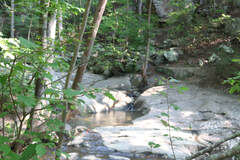 Green by Ray Zimmerman After the image Pool Head by Pat Singer Pool Head | Search Results | Rattle: Poetry In the dead of winter, the leafless trees mock death. The body of mother earth seems a corpse, Until you arrive, embodiment of springtime. Goddess or Green Man, androgynous figure, the earth is renewed when you appear. The green of springtime reflects your skin. I search for Oberon and Titania in your headdress of boulders and rising vapors as they dream elsewhere. They await the Bard’s call, for it is not yet midsummer’s eve. The swimmers dive into your private ocean just as they appeared in Whitman’s poems, Poet of the fecund earth he would appreciate your presence surrounded by vines and shrubs. In your vernal appearance I contemplate my age, the mystery that I am still here after so many years. The cycle of seasons will bring you back again, but a man’s life is linear, physical existence transitory. My spirit will be here to greet you, but my body may not. Published in Sinew, an anthology by Poetry in the Brew. <i>Sinew</i> Chronicles 10 Years of Open-Mic Night Poetry in the Brew | Books | nashvillescene.com Photos of Glen Falls by Ray Zimmerman 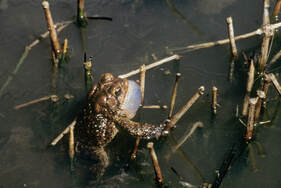 Life After Writing: a work of fiction. This piece won the Chattanooga Writers' Guild monthly contest about a year ago. Life After Writing The check was not in the mailbox. No worries. The bills were not due for another week, and my work-from-home job always paid promptly. Instead of rushing to my bank with a deposit, I faced an ominous letter from the Writers' Office of Standards, Code Enforcement Division, an organization that would occupy my time for the next week. I well remember the contents of that letter. Dear Writer: Your Writer's Permit has been suspended. The Standards Committee has found your writing to be outside the accepted norms for content or style. You must document appropriate writing to restore your permit. On the assigned day, please bring your copy of the Writer's Permit and good quality writing samples, preferably published, to the Office of Standards, Code Enforcement Division, for examination by a representative Standards Officer. The line may look long, but it moves quickly. The Standards Officer will examine your works for appropriate content and style. Character development and the plot will count heavily for works of fiction. Nonfiction works should exhibit believability. Poetic works should contain both metaphor and extended metaphor as well as appropriate rhythm. Extraneous words weigh heavily against writers in all genres. Should you receive a negative evaluation and wish to appeal the Standards Officer's decision, please be advised that the appeal is a three-day process. Rooms in the Appeals Center have Spartan accommodations consisting of a bed, writing desk, and appropriate chair. Friends and relatives are welcome to bring food to assist you with dietary restrictions which the available food may not accommodate. Visitors are encouraged to make their stay brief so you can focus on the business of completing your appeal. Be sure to bring a blank journal and pens. Typewriters, tablets, laptops, and other devices are strictly prohibited. All appeals must be written by hand. At the end of three days, you will read your memoir, book of poems, or work of fiction aloud to a panel of three widely published authors who will judge it based on your delivery and the merits of the work. The Appeals Center will provide reasonable amounts of water and throat lozenges to allow you to complete this task. Should you continue to write after you visit the Office of Standards and Appeals Center, please remember to conform to the standards of the writing community. Small groups of writers have at times attempted to create movements with new writing standards and achieved brief success, but only the established standards have withstood the test of time. Good Luck Siegfried von Machsnichst Comptroller General On the appointed day, I carried a small briefcase that held a folio of published poems, a short story collection, and a novel in progress, as well as the pens and journal for a possible stay at the Appeals Center. I had prepared a suitcase of clothing, which a friend would deliver if needed. The receiving officials would search it for pre-written material. I arrived at the Office of Standards early, but a line of twenty-three people already awaited the Standards Officer's arrival. A short woman in a business suit entered the room. I expected her to immediately begin examining works by the writer at the head of the line, but no, she took the space at the end of the line and gave me a sardonic smile. "Better get in line; more of us will arrive any minute now. Is this your first time through the process?" I had not thought anyone would go through this daunting process more than once. As I took the twenty-fifth place in line, I noticed a window at the front of the room, closed with a wooden shutter and protected with iron bars. The window had a counter large enough to hold a manuscript. Two similar windows flanked it. A clock above the window indicated five minutes until opening time. "Why the iron bars?" I wondered aloud. The woman in front of me snorted. "They keep rejected writers from grabbing the Standards Officer while making threats or shouting about being the nation's most excellent up-and-coming author. Sometimes they belittle the Standards Officer, the Standards Committee, or the Office of Standards. Sometimes they get out of hand. I saw one hauled off to an asylum. Too bad, his writing was actually OK." Every eye focused on the window as it opened with a loud screech. A rotund man wearing horn-rimmed glasses, a light blue shirt, and a blue pinstriped blazer surveyed the line from behind the window and blinked. Presumably, the blazer had matching pants, but he could have been wearing Bermuda shorts from our perspective. His large handlebar mustache was incongruous on his otherwise cleanshaven face and head. "First writer!" he proclaimed. Each writer, in turn, placed their writing samples on the counter. The portly Standards Officer briefly examined one or two pieces and stamped the Writers' Permits "Approved" or "Rejected." He pointed to his right for those who were accepted, left for those rejected. All went smoothly until the seventh writer in line, a thin, nervous man, received the rejection gesture. "No, no, no," he shouted. "I won't appeal. I can't give this place another three days of my life." He exited through a previously unseen door. With a chuckle, the woman in front of me said, "Frequent flier. He'll be back. He has three days to change his mind, you know." According to the clock above the window, an hour had passed. The line behind me stretched to the entrance. A guard, now stationed there, briefly opened the door and assured the writers outside that they would be admitted as space allowed. After completing his review of the twelfth writer's work, the Standards Officer proclaimed, "Break time. Reviews will resume in fifteen minutes." The window screeched shut. Easy for him to say," said someone further up the line. "He actually gets a break." Upon ascertaining that I would hold her place in line, the woman in front of me strolled to the ladies' room. Others noticed this and availed themselves of the facilities. In some cases, arguments ensued when they returned to their places in line. Precisely fifteen minutes later, the shutter screeched open. "Thirteenth writer," proclaimed the now-familiar Standards Officer. The window to his right likewise screeched open, and a woman in a silk blouse and navy blazer proclaimed, "Hold your places in line. Fourteenth writer, please." Ten minutes later, the remaining window opened. A man with an angular, carrot-shaped head and red hair looked out. He wore a black shirt with a matching black tie. "Seventeenth writer," he proclaimed. Half an hour later, he called out, "Twenty-fifth writer." I stepped forward and placed my writing samples on the counter. He fanned through the portfolio of poems and set it down. He did the same with the short stories. "Published collection. Exceptionally good." Then he picked up the manuscript. "Novel in progress. Excellent. I'll look at this." He fanned through the pages, quickly read two, and proclaimed, "Sophomoric! Work rejected." He stamped the rejected seal in red ink on my permit. "Are you appealing?" he queried. "Some people think so," I nearly replied. I thought better of it and simply said, "Yes." He stamped the purple seal of appeal on my permit and pointed to his left, my right. As I entered the hallway and walked toward the Appeals Center, a raspy yet melodious voice singing the strains of "Downtown Train" issued from the overhead speakers. An auspicious omen, I thought. To request a free PDF of my recent works, reply to this message. Put free PDF in the subject line. Support my writing and photography Via PayPal: PayPal.me/znaturalist |
Archives
April 2024
Categories |
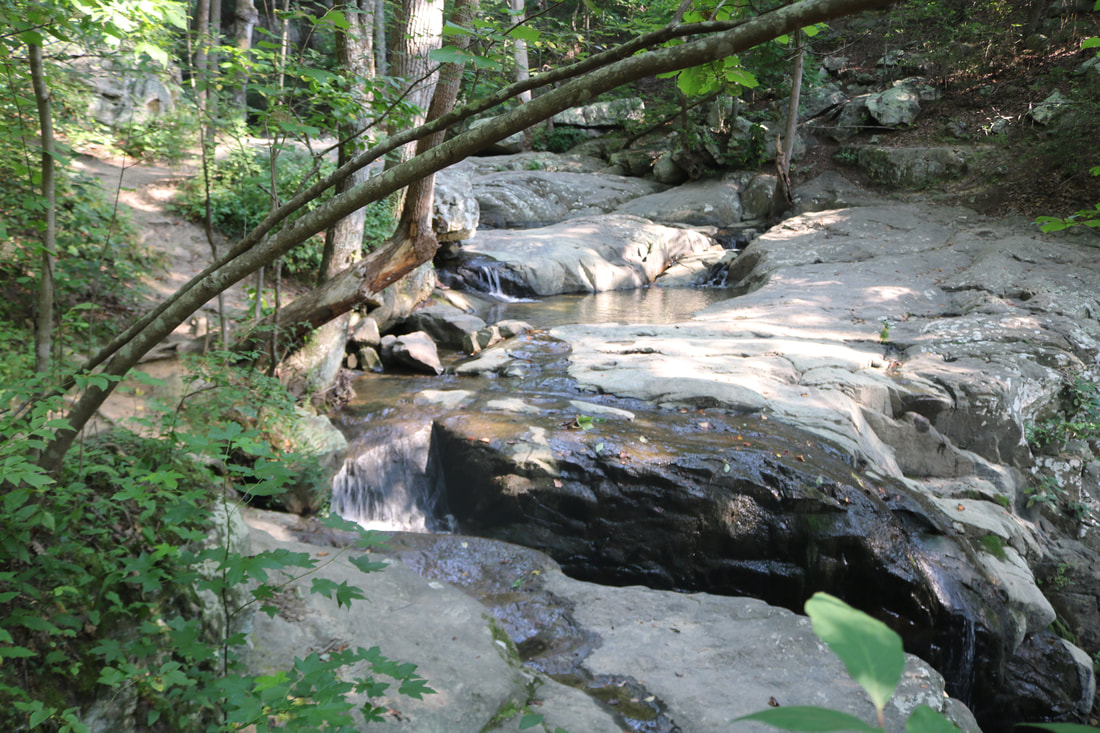
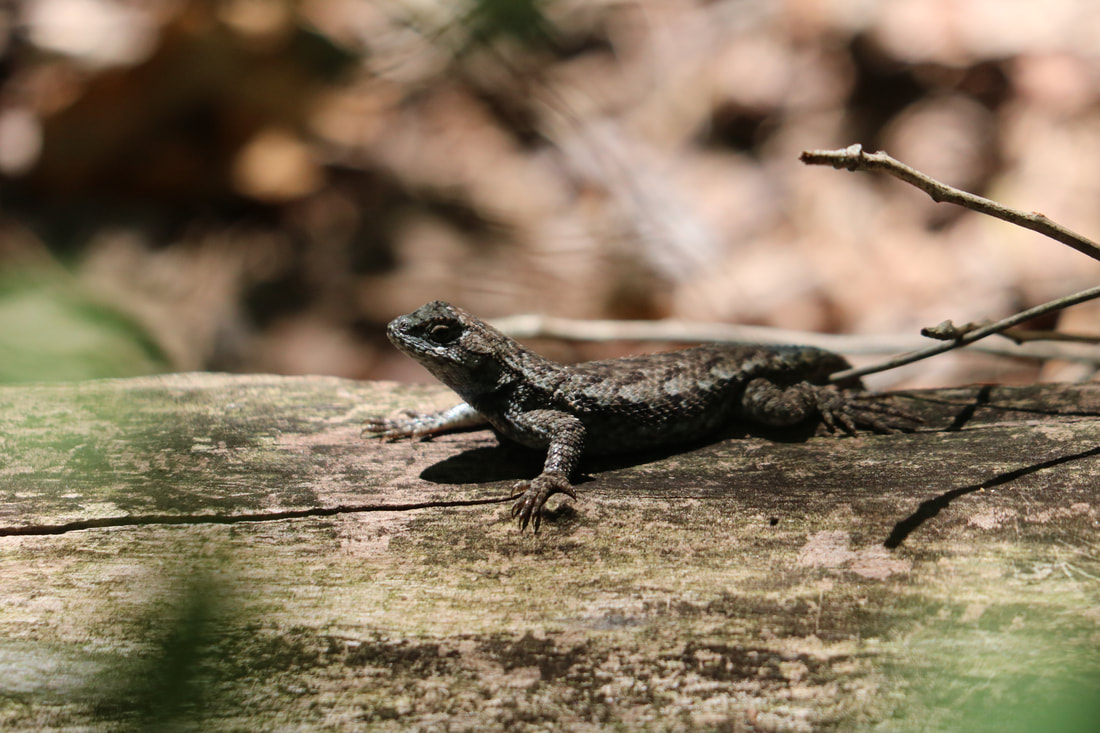
 RSS Feed
RSS Feed